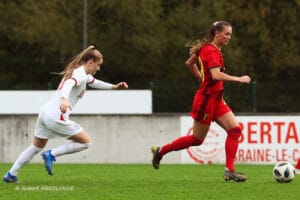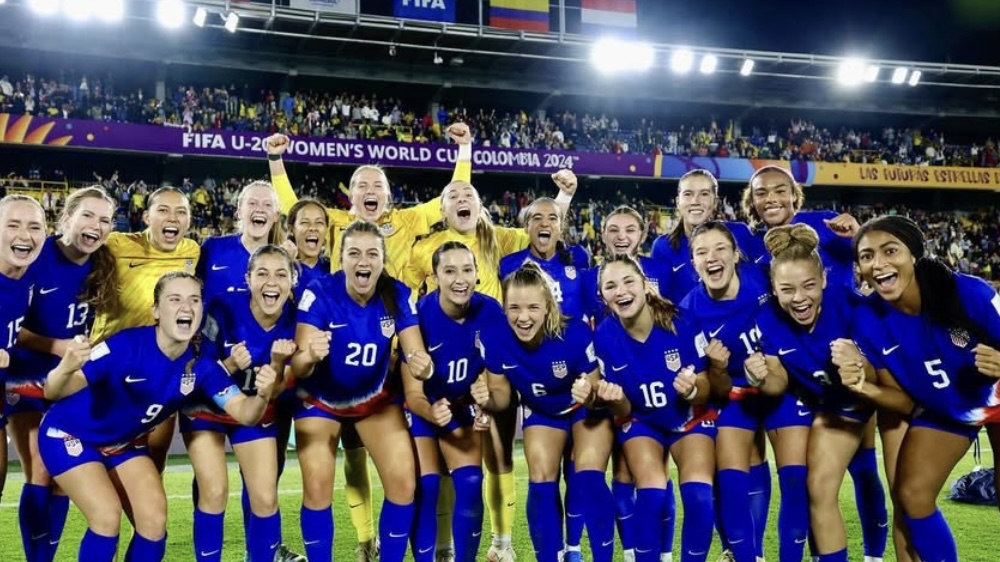Against All Odds: Alexandra Soree’s Pro Soccer Journey With Chronic Pain
I began playing soccer when I was seven years old and instantly fell in love with the sport. I was constantly consumed by soccer and spent almost every moment of my spare time with a ball at my feet.
As I began high school, it became clear to me that I was on route to achieving everything I had dreamed of as a kid. I made a verbal commitment to play soccer at the University of Central Florida and began playing with the Belgian National team at the youth levels. I felt more confident in my game than I ever had.
In February of 2015, it all changed for me. I was kneed in the groin during a 1v1 drill, and moments later, my left leg began swelling at an alarming rate.
I had developed a deep vein thrombosis, compromising the blood flow throughout my left leg. After spending a week in the hospital, I underwent a procedure that would theoretically rid my leg of the clots.
Cliché, as it is, my first question waking up from the procedure was when I would play soccer again. At the time, I had no idea what a journey it would be.
After undergoing two more procedures, it became clear that the clots would persist and permanently scar my veins. I sought out many opinions and heard time after time that I wouldn’t compete again.
Hearing that I wouldn’t compete again was terrible. Hearing it repeatedly was defeating.
Soccer had been my everything since the age of seven. It was how I defined myself and what I centered my life around. I felt no sense of closure stepping away from it. It had happened so suddenly, and it was such a rare injury. Soccer was ripped away from me. I had nobody to base my recovery on, no specific athlete showing me that it would be possible to come back from this.
The pain I was in simply walking was unbearable, and I had no reason to believe that the doctors’ conclusion was untrue. I called my soon-to-be college coach to de-commit, but when she didn’t answer, I decided that I wasn’t ready to walk away from the sport.
Soccer was my biggest identity and sense of self, and I genuinely felt lost without it. I knew I needed to do everything I could to get it back. The pain was incredible. It still is. Walking around the block was an impossible task at the time. I couldn’t run more than four steps. It was an incredibly slow, challenging, and painful progression to make my way back to soccer, but eight months later, I was on the field again.
To this day, soccer is almost always accompanied by fairly intense swelling and sharp pain. At a certain point, it just became a norm for me. That’s when I knew I had to address the other aspects of my injury. Physical pain is sharp and loud. It demands your attention, as well as deserves it. But, it is not the only struggle that comes with an injury.
I became unsure of my place on the field, immediately thinking that my injury made me less of a player or took away from my talent. I lost my identity within the sport and my enjoyment of it.
The confidence I worked so hard to build throughout the years was completely shattered. I wavered between the need to feel validation through my accomplishments and the fear of any potential failure in my sport.
Playing through a chronic injury weighs heavily on me at times. Wanting to be sure that what I’m doing is worth the pain I endure has made it extremely difficult for me to separate my personal “success” and “failure” in soccer from how I view and value myself.
Six years later, I am playing at the professional level and have accomplished more than I could have imagined. There are many days where I struggle to find joy playing through the pain.

There are just as many–if not more–that I leave the field beaming because I simply love what I do.
I am still working to rebuild my confidence. I appreciate all I accomplished since being told none of it was possible. Acknowledging and facing the mental and emotional stress that accompanies chronic pain has been the most important thing as my career has developed.
_
GIRLS SOCCER NETWORK: YOUR SOURCE FOR GIRLS SOCCER NEWS
Girls Soccer Network
Your source for girls soccer news
Related Content
Breaking Down the USWNT’s Future Stars Roster
19 College Soccer Standouts Who’ve Signed in the NWSL So Far
The Unsung Legend: Celebrating Becky Sauerbrunn’s Soccer Journey
10 Top Under-20 Soccer Players to Pay Attention to in 2025
Veganuary: 5 Women’s Soccer Players Who Swear by a Vegan Diet
10 Soccer-Inspired Careers for Life After Soccer
Recommended Content
It seems we can't find what you're looking for.








